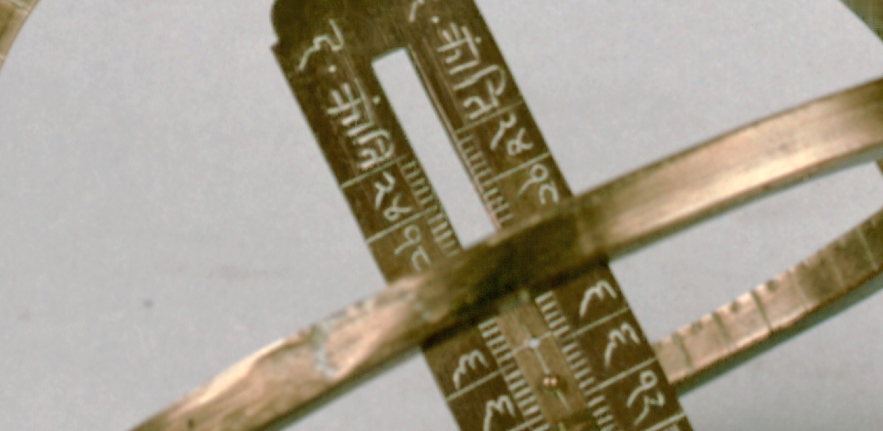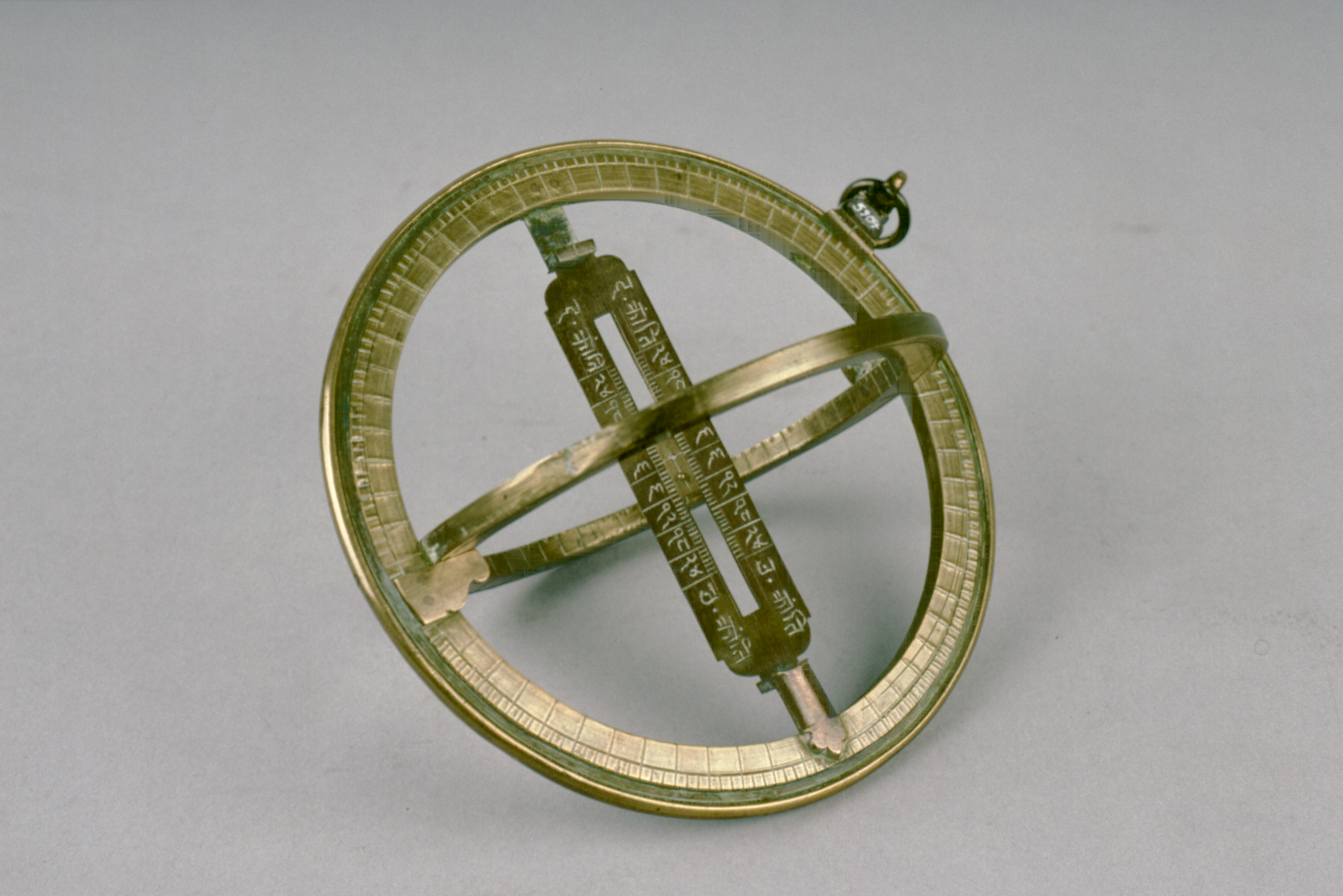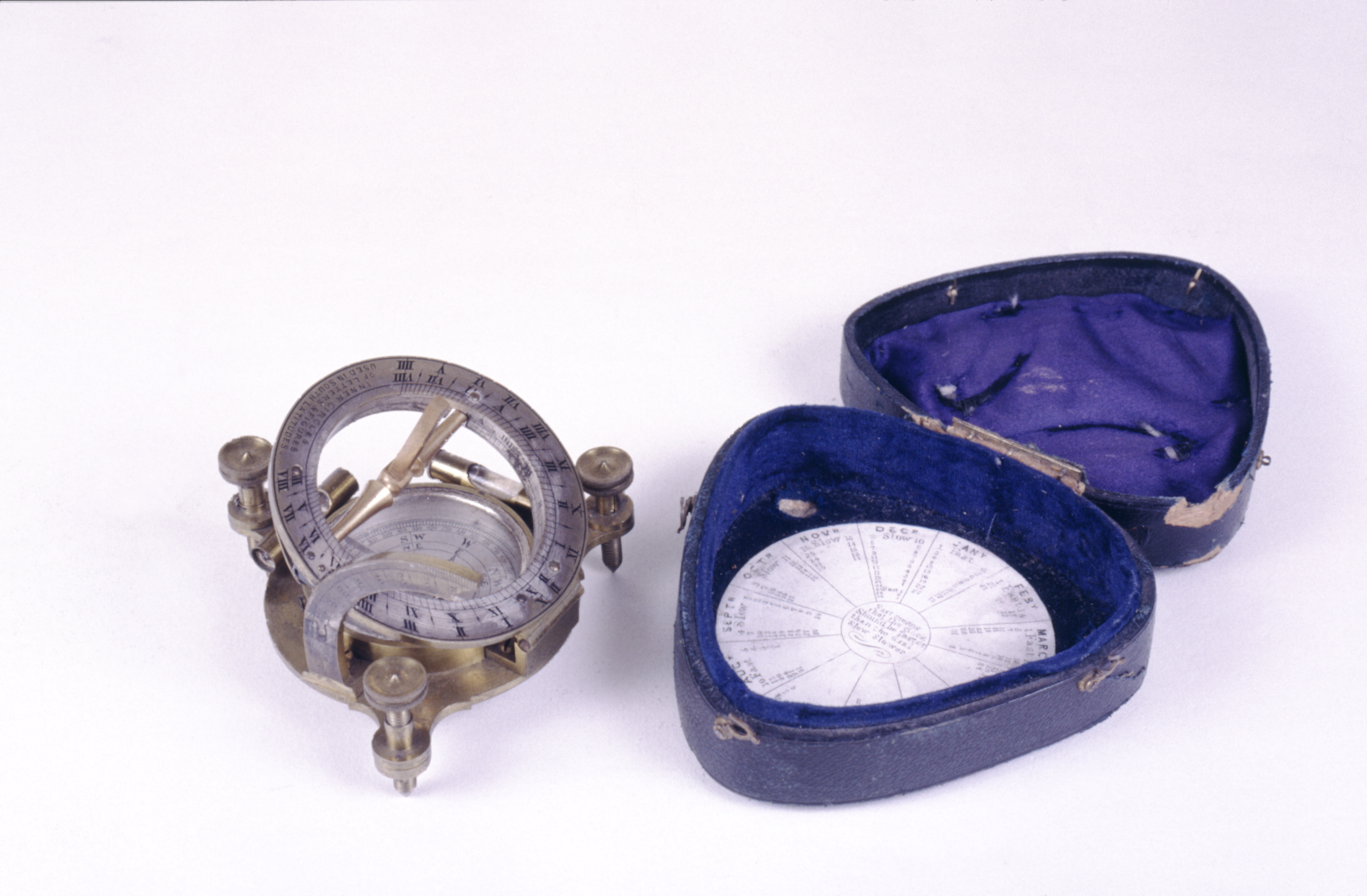
Francis Newman
Supervisor: Simon Schaffer
From MPhil seminars and readings early in the course, I knew I was interested in cross-cultural knowledge exchanges, the category of ‘scientific instruments,’ and non-Western conceptions of time. So when perusing the Whipple Museum catalogue, I was intrigued by an object that looked like an earlier European type of sundial, but was ornately engraved in Sanskrit. I then discovered there were several similar specimens in other collections around the world. This eventually led me to sift through old museum catalogues and East India Company archives, sleuth into records of British Royal tiger hunts in India, and familiarise myself with the wide secondary literature surrounding the role of astronomical and horological instruments in colonial settings.

Universal equinoctial ring dials, often highly elegant and ornate, are a common sight in European scientific instrument collections. A type of portable sundial developed in early seventeenth-century Europe, they can be employed to tell the local time at any known latitude. This dial (1) is one of eight similar specimens that challenge the traditional historiography of scientific instruments: Inscribed in Sanskrit with letters and numerals denoting indigenous Indian astrological signs and units of time, they were produced in late nineteenth-century Jaipur, long after clocks and watches became common and sundials supposedly ‘obsolete’. So who made them, why, and for whom?
Through my research, I found that, rather than having been used as timekeeping devices, these instruments were likely used either as pedagogical instruments to teach astrology and/or astronomy, possibly similarly to British-made dials, such as the Newman dial (2). Alternately, they may have been produced as ornamental souvenirs for Victorian British tourists who used objects they perceived as ‘authentic’, to reinforce their own constructed narrative of an exotic, antiquated astronomical tradition in South Asia.

Their mixed provenance—made in Jaipur by indigenous artisans, but featuring contributory elements of the astral traditions of both India and Europe—means they belie simple classification as either European or indigenous Indian instruments, or as ‘old’ or ‘obsolete’ devices.
Consulted items from the Whipple Museum:
- Sanskrit-engraved universal equinoctial sundial. Probably produced in Jaipur, Rajasthan, in the late 19th century (Wh.5907).
- Compass dial. Likely produced by a major British instrument maker for W. Newman & Co, a publishing house in Calcutta, Bengal, in the late 19th century (Wh.0123).
